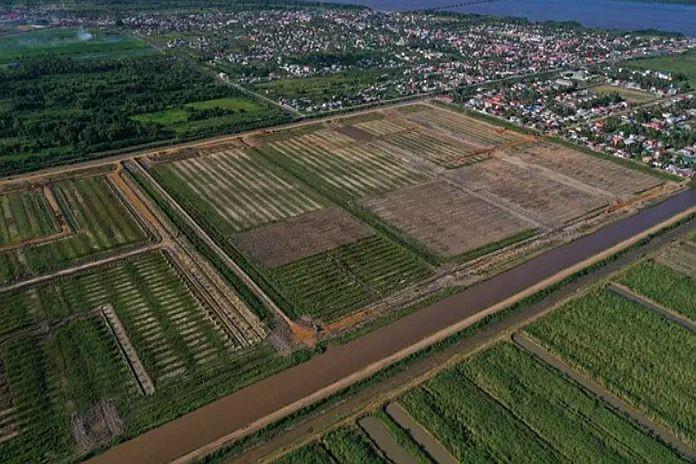In a move that has stunned Guyanese political observers, the two top elected officials of Region Four—long considered the heartland of opposition support—have publicly broken ranks with the APNU+AFC coalition to endorse President Irfaan Ali and the ruling PPP/C government ahead of the 2025 general elections.
Samuel Sandy, the Vice Chairman of Region Four and a veteran People’s National Congress (PNC) member, announced on June 2 that he would support President Ali’s re-election, citing the government’s economic stewardship, inclusive governance, and national development vision. Just days earlier, Region Four Chairman Daniel Seeram, also elected on an APNU+AFC ticket, made a similar declaration—praising the government’s “One Guyana” vision and development track record.
Region Four: A Symbolic Shift in the Opposition’s Stronghold
Region Four (Demerara-Mahaica), which includes the capital Georgetown and key East Coast and East Bank communities, has long been seen as the stronghold of the opposition PNC. That two top officials in the Regional Democratic Council (RDC)—both elected under the opposition’s banner—have now endorsed the PPP/C is politically unprecedented.
Sandy, widely viewed as a rising figure in the PNC, described the PPP/C as the only party with the “experience, competence, and inclusive vision” to govern a rapidly changing Guyana. He highlighted improvements in infrastructure, healthcare, energy, housing, and security across the region.
“Under [President Ali’s] leadership, Guyana has experienced unprecedented economic growth, strengthened international partnerships, and transformative investments that have directly improved the lives of our people,” Sandy said in his public statement.
PPP/C Seizes the Momentum
The PPP/C government has wasted no time framing these endorsements as evidence of a shifting political tide. President Ali, speaking at a recent rally, welcomed the endorsements with a unifying tone:
“Our brothers coming across are welcome. This is not about PPP or PNC. It’s about moving Guyana forward together.”
Vice President Bharrat Jagdeo, the PPP’s General Secretary, said the endorsements validate what the government has long argued—that its policies transcend partisan lines. Jagdeo emphasized that cooperation from Region Four’s leadership would enable faster implementation of development projects.
“We can cut through a lot of red tape and get things done even faster for the people,” he stated.
Cracks in the Opposition
Both Sandy and Seeram were elected in 2018 under the APNU+AFC coalition, which has since fractured, with the Alliance For Change (AFC) pulling out in April over internal disagreements. Their endorsements now serve as further evidence of a disunited opposition, and underscore growing frustration among some APNU members with the party’s current direction.
PNC Leader Aubrey Norton dismissed the defections as opportunistic, accusing both men of being “never true team players” and suggesting they were motivated by “promises of position”—though no government appointments have been confirmed.
Ground Reactions: Mixed but Shifting
On the ground in Region Four, reactions have been divided. Some traditional APNU supporters feel betrayed. But others, particularly younger voters and urban professionals, are less doctrinaire and more focused on visible improvements:
-
Highway expansions on the East Coast
-
Upgraded hospitals and health centers
-
Construction of the new Demerara River bridge
A resident in South Ruimveldt told reporters:
“I always vote PNC, but honestly these guys [PPP] doing things we can see.”
Generational Change and a “Post-Race” Narrative
Sandy and Seeram—both in their 30s and 40s—have been portrayed by the PPP as part of a younger, more pragmatic generation willing to move beyond race-based politics. Sandy even called on older Guyanese to guide youth toward opportunity, not division.
Their endorsements follow a broader PPP strategy of eroding the historical Indo-Afro political divide, amplified through programs like:
-
Universal cash grants for schoolchildren
-
20,000+ GOAL scholarships, surpassing targets
-
Coding and robotics hubs in underserved communities
The Jason October story—a young Afro-Guyanese man publicly supporting the PPP—was similarly highlighted by the party to reinforce this message.
Political Impact: Real or Symbolic?
While elite endorsements don’t always guarantee voter movement, political analysts agree that optics matter. Region 4 holds the largest voting population. Even a marginal swing or lower opposition turnout could tip the electoral balance, especially since the 2020 elections were won by a slim margin.
The PPP is framing this as the beginning of a broader shift, with Jagdeo saying:
“Even APNU folks recognize progress.”
A Changing Political Landscape
With oil revenues pouring in and Guyana’s economy booming, the old political rules are being rewritten. The PPP’s ability to attract prominent opposition figures, particularly in key regions, suggests it is successfully expanding its appeal.
Whether this reflects genuine grassroots realignment or clever optics will be tested in the 2025 elections. But for now, the ruling party has scored a significant symbolic win—one that underscores its narrative of unity, delivery, and forward momentum.
Region: Demerara-Mahaica (Region 4)
Sources:
-
Stabroek News – stabroeknews.com
-
Guyana Chronicle – guyanachronicle.com
-
Regional Democratic Council Region 4 Minutes
-
Statements by Samuel Sandy and Daniel Seeram
-
Caribbean National Weekly – caribbeannationalweekly.com
- Election Tracker: PPP Rides Economic Wave as Opposition Seeks to Regain Narrative
- Election 2025: Campaign Kicks Off with Date Set and Parties at Crossroads
- Justice for All? Guyana’s Drive to Modernize Courts and Restore Trust in the Law
- Ali: “Include AI in the Constitution” – President Wants Digital Age Reflected in Reforms




